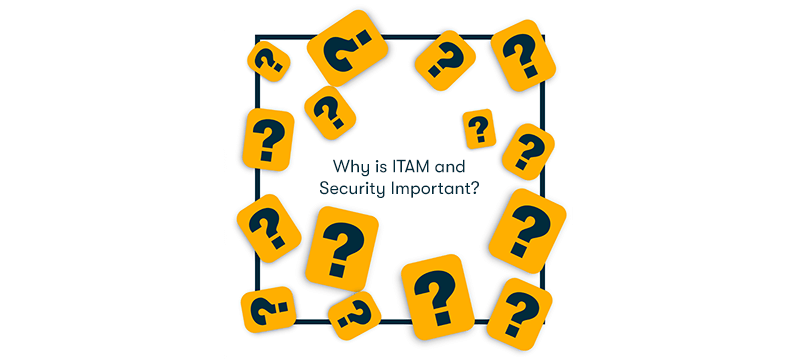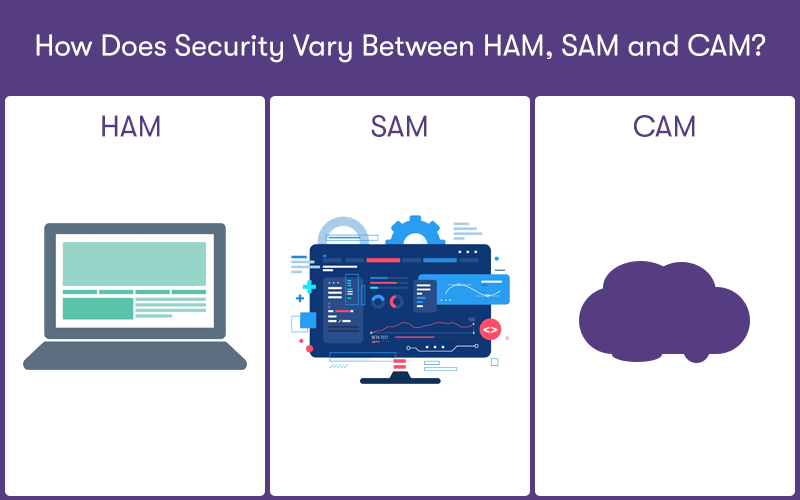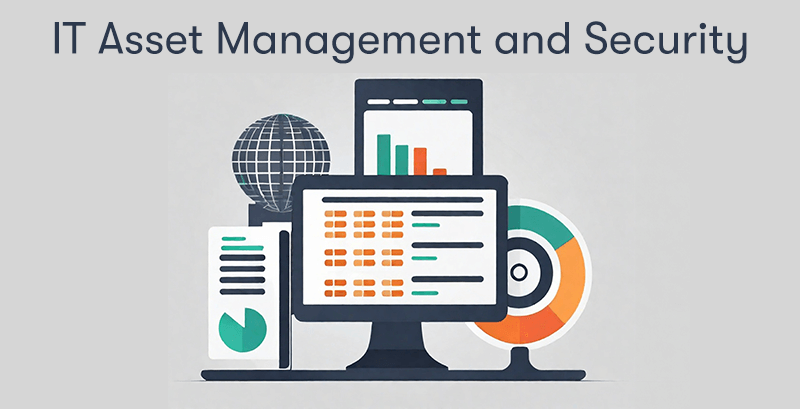IT Asset Management and Security
Welcome to the dynamic world of Information Technology Asset Management (ITAM) and Security, a critical domain where efficiency meets vigilance in the digital era. In this realm, the meticulous orchestration of IT assets, spanning hardware, software, and cloud resources, is not just about optimising performance but also about fortifying an organisation's cyber defences.
ITAM goes beyond mere inventory management. It is a strategic approach that ensures assets are utilised effectively and securely, keeping pace with rapid technological advancements and evolving security threats.
As we delve into this intricate interplay between asset management and cybersecurity, we uncover how ITAM is instrumental in enhancing operational efficiency, ensuring regulatory compliance, and safeguarding sensitive data.
We will explore how cyber security differs between Hardware Asset Management (HAM), Software Asset Management (SAM), and Cloud Asset Management (CAM).
Join us as we navigate the complexities of ITAM and unravel its indispensable role in bolstering an organisation's digital infrastructure.
Why is ITAM and Security Important?

ITAM and Security are crucial aspects of modern businesses and organisations for several reasons:
Asset Optimisation and Cost Savings
ITAM helps organisations efficiently manage their IT assets (like hardware, software, and network resources). By knowing your assets and how they are used, businesses can avoid unnecessary purchases, optimise the use of existing assets, and plan effectively for future investments.
Compliance and Audit Readiness
Many industries have regulatory requirements regarding the use of IT assets, data protection, and privacy. ITAM ensures that an organisation complies with these regulations by keeping track of software licenses, user permissions, and data usage. This readiness is vital during audits to avoid legal and financial penalties.
Security Enhancement
A key aspect of ITAM is understanding what assets exist in the environment and how they are configured and updated. This awareness allows for better security management, as it's easier to protect well-documented and monitored assets.
Risk Management
ITAM and Security go hand in hand in identifying and managing risks associated with IT assets. This includes identifying outdated systems that need updates, recognising unauthorised software that could pose security threats, and ensuring that data is stored and used securely.
Strategic Decision Making
Effective ITAM provides valuable insights into how IT assets support business processes and objectives. This information is crucial for strategic decision-making regarding IT investments, upgrades, and deploying new technologies.
Incident Response and Recovery
In the event of a security breach or IT failure, having an accurate and up-to-date inventory of IT assets can significantly speed up the response and recovery process. This preparedness minimises downtime and the associated costs.
Enhanced Productivity
Proper management of IT assets ensures that employees have the tools and resources they need to work efficiently. Security measures also protect against disruptions caused by malware, data breaches, and other cyber threats.
In summary, ITAM and Security are integral to an organisation's IT environment's efficient, secure, and cost-effective operation. They help manage risks, ensure compliance, and support strategic decision-making, ultimately contributing to the overall success and resilience of the organisation.
What Are Best Practices for Cyber-Security and ITAM?

Best practices for integrating Cybersecurity within Information Technology Asset Management focus on ensuring that IT assets are managed efficiently and secured against potential threats. Here are key practices to consider:
Comprehensive Asset Inventory
Maintain a detailed and up-to-date inventory of all IT assets, including hardware, software, and network devices. This inventory should include information about the asset's location, user, configuration, and security status.
Asset Risk Assessment
Regularly assess IT assets for vulnerabilities and potential security risks. This involves evaluating the criticality of assets to business operations and their potential exposure to threats.
Secure Configuration Management
Ensure that all IT assets are configured securely in line with organisational security policies. Regularly review and update these configurations to mitigate security risks.
Patch Management Integration
Integrate patch management with ITAM processes. Keep track of the patch status of all software and hardware and ensure that they are updated promptly to protect against vulnerabilities.
License Compliance and Software Management
Monitor software licenses to ensure compliance and prevent the use of unauthorised or pirated software, which can be a source of malware and other security threats.
Access Control and Privilege Management
Manage and monitor user access to IT assets. Implement least privilege access policies and regularly review user permissions to prevent unauthorised access.
Incident Response and Asset Tracking
In the event of a security incident, having accurate IT asset information can speed up response and recovery efforts. Track and manage assets during such incidents to understand the impact and scope of breaches.
Secure Disposal or Repurposing of Assets
When IT assets reach the end of their lifecycle, ensure they are disposed of or repurposed securely. This includes wiping data from storage devices to prevent data leakage.
Integration with Cybersecurity Frameworks
Align ITAM processes with established cybersecurity frameworks and best practices, such as those from NIST, ISO, or CIS.
Regular Audits and Reporting
Perform regular audits of IT assets to ensure compliance with cybersecurity policies. Use these audits to identify gaps in security and address them proactively.
Collaboration Between ITAM and IT Security Teams
Foster strong collaboration between ITAM and IT security teams. This ensures that security considerations are embedded in asset management processes.
Training and Awareness
Educate ITAM personnel about cybersecurity risks and best practices. Their understanding of security can significantly enhance the organisation's overall cybersecurity posture.
By integrating these cybersecurity best practices into ITAM processes, organisations can manage their IT assets more effectively and significantly enhance their overall security posture, ensuring that their assets are protected against the evolving landscape of cyber threats.
How Does Security Vary between HAM, SAM and CAM?

In the context of IT Asset Management (ITAM), which includes Hardware Asset Management (HAM), Software Asset Management (SAM), and Cloud Asset Management (CAM), the approach to security can vary significantly due to the nature of the assets being managed. Let's explore how security considerations differ between HAM, SAM, and CAM:
Hardware Asset Management Security
Physical Security: Ensures the physical protection of hardware assets like servers, workstations, and network devices. This includes secure storage, controlled access to hardware, and protection against theft or damage.
Device Hardening: Involves configuring hardware devices to minimise vulnerabilities, such as disabling unnecessary ports and services.
Endpoint Protection: Deploying security measures like antivirus, firewalls, and intrusion detection systems on individual devices.
Asset Lifecycle Management: Includes secure disposal or repurposing of hardware to prevent data leakage from discarded or reused devices.
Inventory Management: Keeping track of hardware locations and status to prevent unauthorised access or use.
Software Asset Management Security
License Compliance: Ensuring that all software is appropriately licensed to avoid legal issues and the risk of malware from unauthorised software.
Patch and Update Management: Keeping software up to date to protect against vulnerabilities. This includes managing patches and updates for operating systems and applications.
Software Inventory: Maintaining an inventory of all software assets to control usage and manage updates and security patches.
Application Whitelisting: Controlling which applications are permitted to run on the network, reducing the risk of malicious software.
Data Privacy and Compliance: Ensuring that software usage complies with data protection laws and regulations.
Cloud Asset Management Security
Data Security and Encryption: Since data in the cloud is often accessible via the internet, it's crucial to encrypt data in transit and at rest.
Access Control and Identity Management: Managing who has access to cloud resources and ensuring strong authentication mechanisms.
Compliance and Governance: Ensuring cloud services comply with industry regulations and standards, such as GDPR, HIPAA, etc.
Vendor Management: Assessing and managing the security risks associated with third-party cloud service providers.
Visibility and Monitoring: Continuous monitoring of cloud assets for suspicious activities and performance issues.
Common Security Considerations
Across HAM, SAM, and CAM, some common security considerations include:
- Risk Management: Identifying, assessing, and mitigating risks associated with IT assets.
- Incident Response: Preparing for and responding to security incidents promptly.
- Employee Training and Awareness: Educating employees about security best practices related to hardware, software, and cloud services.
- Regular Audits and Compliance Checks: Ensuring that assets comply with internal policies and external regulations.
Each asset management area requires a tailored approach to security, reflecting the unique challenges and risks associated with managing hardware, software, and cloud resources. Integrating these security practices into ITAM processes is crucial for protecting an organisation's assets from various threats and vulnerabilities.
Final Notes on ITAM and Security
In conclusion, our exploration of IT Asset Management and cybersecurity underscores their pivotal role in today's digital landscape. From Hardware Asset Management to Software Asset Management and Cloud Asset Management, each facet presents unique security challenges and demands tailored strategies.
Effective ITAM enhances organisational efficiency, ensures compliance, and fortifies cybersecurity defences. It involves an intricate blend of regular asset audits, risk assessments, secure configuration, and diligent lifecycle management. Moreover, the collaboration between ITAM and IT security teams is essential, bridging the gap between asset management and security protocols.
As we navigate an increasingly complex and threat-prone digital world, integrating robust ITAM practices with cybersecurity measures is beneficial and imperative for safeguarding an organisation's digital assets.


